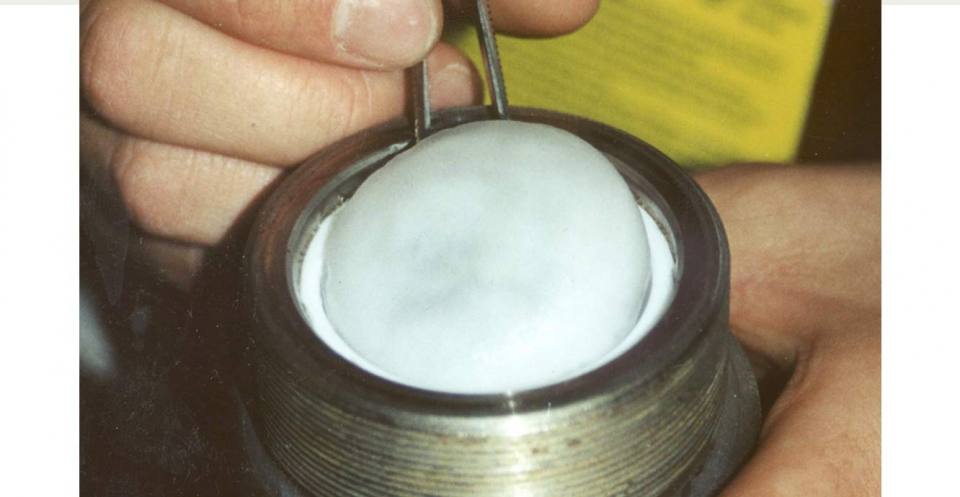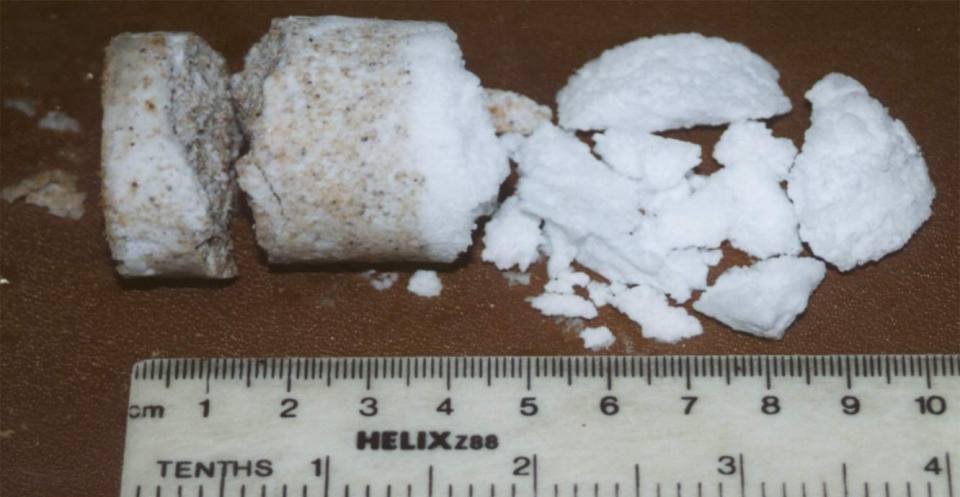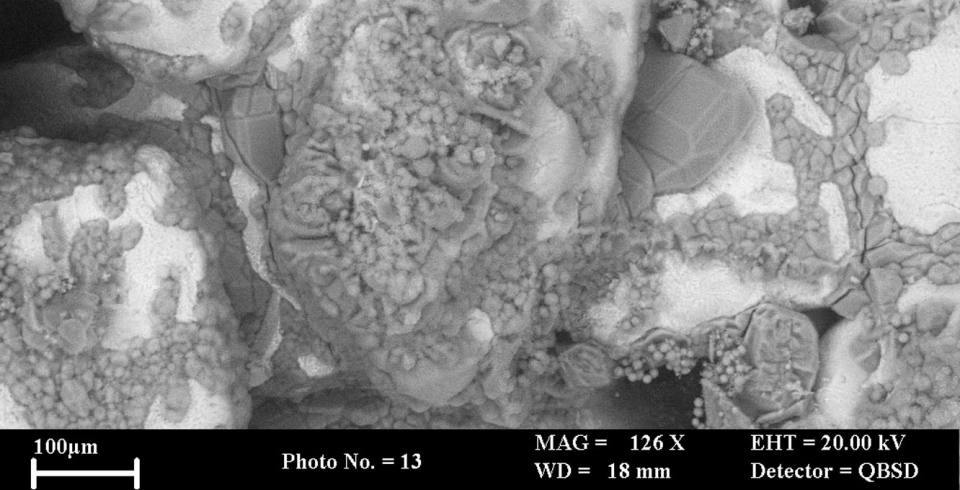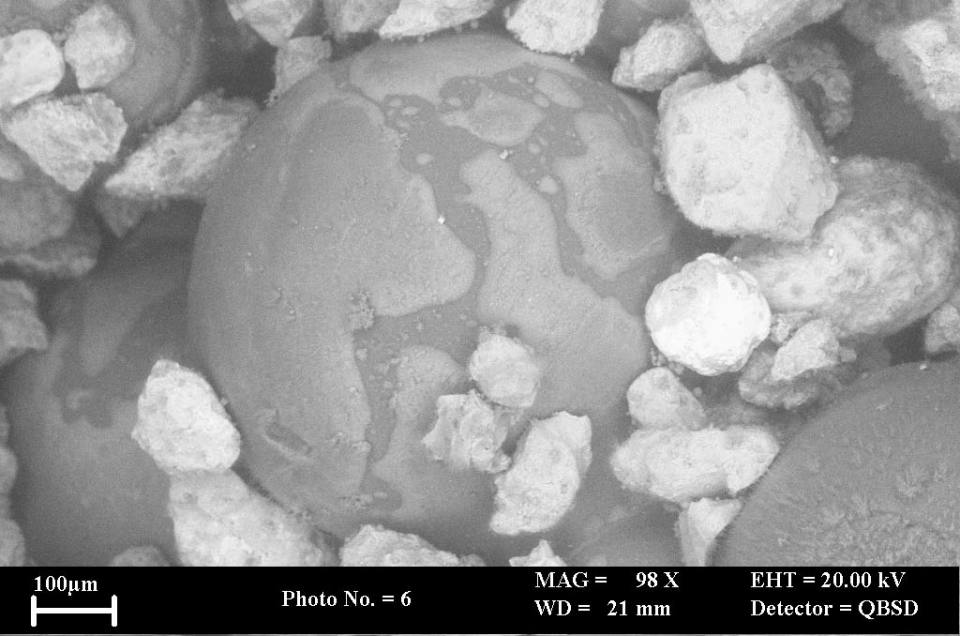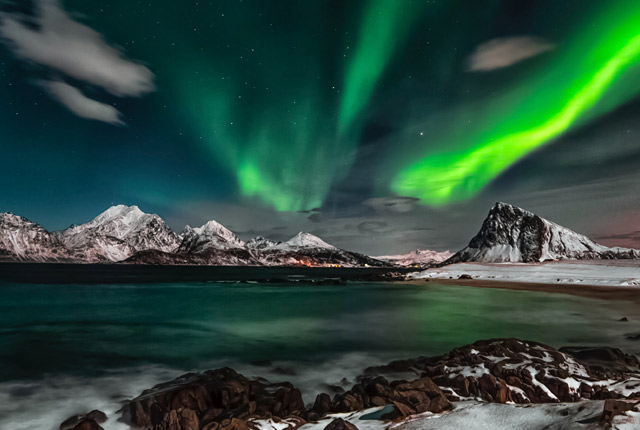The BGS Hydrate and Ices Laboratory is a specialised facility that has been used for 10 years to study the behaviour of gas hydrates within sediments.
What are gas hydrates?
Hydrates are a subgroup of a range of compounds called clathrates and have water molecule ‘cages’. A wide range of gases and low boiling point liquids can fit in the cages, including methane and carbon dioxide. They are usually white, ice-like solids that are stable at low temperatures and high pressures (e.g. deep oceans, or below permafrost in polar regions).
How do we study gas hydrates?
The laboratory contains a variety of temperature-controlled equipment and pressure vessels capable of maintaining controlled, experimental conditions representative of temperatures and pressures typical the seabed of deep seas or below permafrost. As well as the equipment in which gas hydrates can be formed, the laboratory also undertakes cryogenic scanning electron microscopy (cryo-SEM) and cryogenic X-ray diffraction (cryo-XRD), both of which are capable of analysing cryo-preserved samples of hydrates/ice.
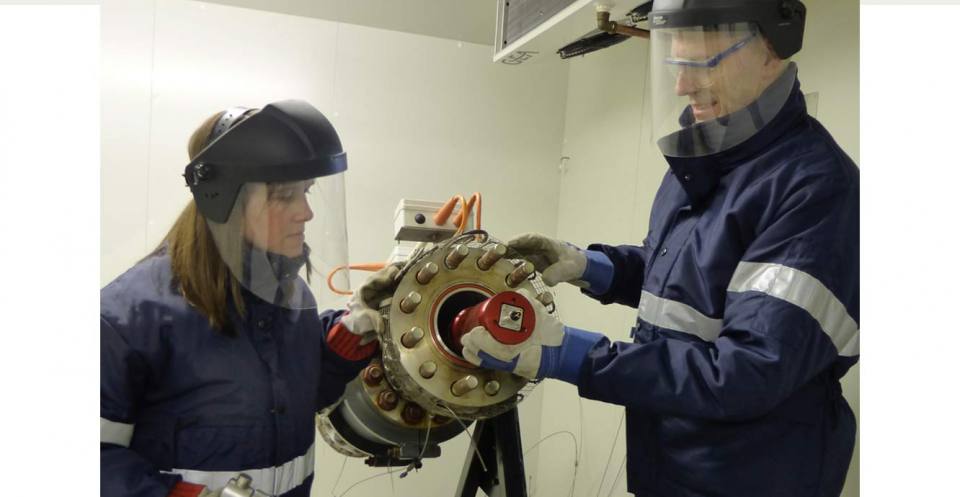
Preparing to pressure test a subsea gas flow meter, used to monitor gas release from dissociating hydrate samples. BGS © UKRI.
Laboratory capabilities
Laboratory capabilities include:
- synthesis of CO2 and methane hydrate as solid hydrates and as sediment-hosted hydrates in a variety of lithologies
- simulation of permafrost through freezing wet sediments
- pressure/temperature cycling and dissociation studies of hydrates and ice
- geophysical measurements on hydrates and frozen sediments
- resistivity logging using non-contact methods and internal resistivity determination
- determination of acoustic properties (Vp and Vs) of hydrates and frozen sediments
Areas of investigation
These are some of the areas of investigation in which the laboratory and associated facilities have been involved.
CO2 hydrate in deep-water sediments
The formation of CO2 hydrate in cool, moderately deep-water marine sediments is a fairly novel method for underground CO2 storage but offers certain advantages in terms of geochemical trapping mechanisms. The conditions and reactions we study are quite different to those in more conventional CO2 storage schemes, where conditions are warmer and where free CO2 exists as a supercritical fluid. Storage areas of interest are:
- as liquid CO2 with a hydrate cap above a relatively shallow reservoir
- the formation of CO2 hydrate as a secondary trapping mechanism should CO2 migrate out of a much deeper reservoir
Seabed core material
We study seabed core material to elucidate the relationship between natural methane hydrate and the sediment that hosts it, as well as the process of hydrate breakdown during warming and depressurisation.
Planetary science
We study hydrate and ice breakdown under low pressure/temperature conditions that are representative of those on Mars.
Equipment capabilities
Our equipment capabilities have recently been enhanced by a major refit of the laboratory and now include:
- a 3 × 3 × 2.4 m cold room capable of maintaining stable temperatures from -20°C to +10°C
- a large (1200 litre) cooled incubator capable of maintaining stable temperatures from -10°C to +50°C
- a medium-sized (600 litre) cooled incubator capable of maintaining stable temperatures from -10°C to +50°C
- a small (1200 litre) cooled incubator capable of maintaining stable temperatures from -10°C to +50°C
- other fridges, freezers and chiller units can maintain a range of low temperatures as required
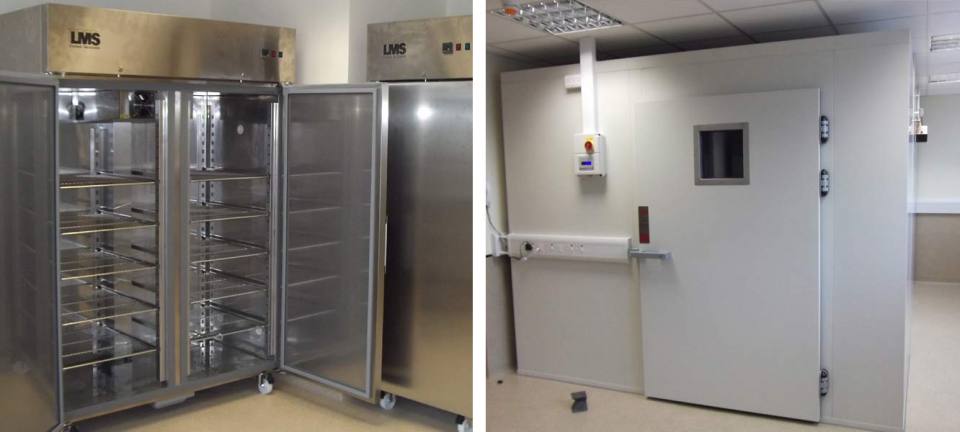
Hydrates and ices laboratory equipment: cooled incubators and walk-in freezer room. BGS © UKRI.
A range of equipment can be placed into the incubators or cold room as required. This includes physical testing equipment, electronic sensors or pressure vessels. The latter range in size from approximately 1–12 litres. Many items of equipment in the lab have been manufactured within BGS workshops and it is possible for us to construct specialised equipment for specific studies.
Need more information?
Relative topics
You may also be interested in
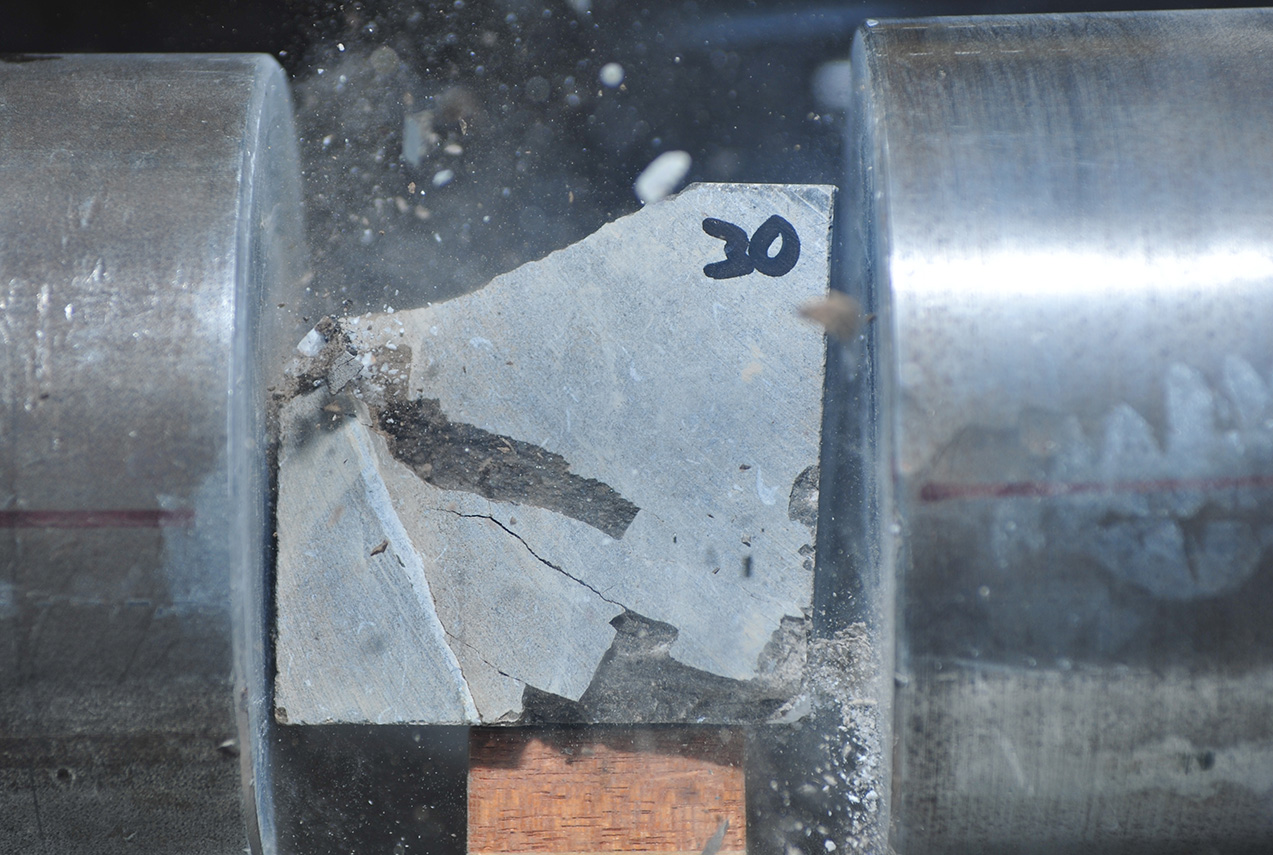
Science facilities
BGS operates and maintains a wide range of state-of-the-art laboratories and other facilities, which underpin virtually all of our research.
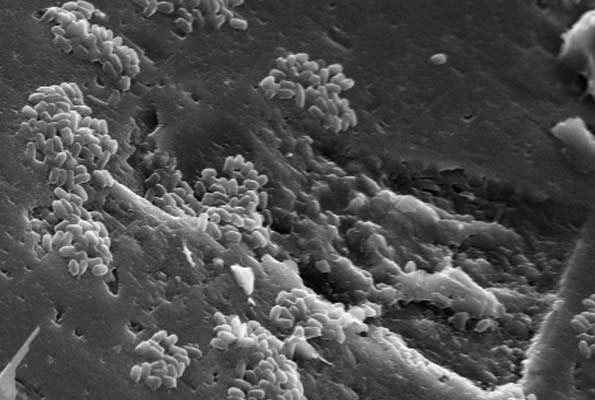
Fluid and Rock Processes Laboratory Cluster
Identifying, measuring and quantifying complex geological and environmental processes essential in the efficient utilisation of natural resources and underground spaces.


